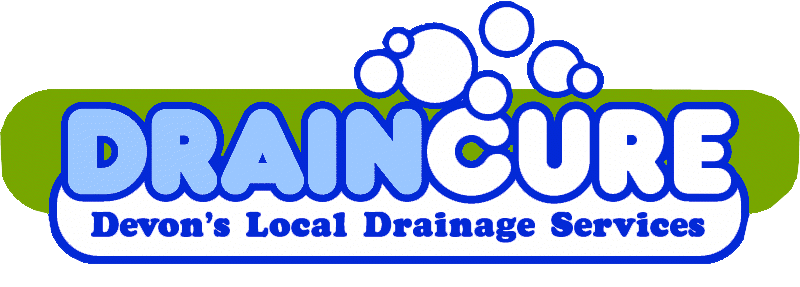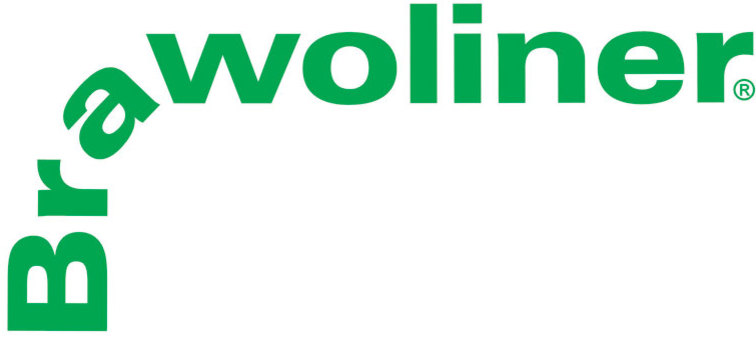Drain Lining and Relining
There was a time when the only remedy for a defective drain was to dig and renew. This could be very expensive and disruptive especially when the drains were deep or they ran under buildings.
Over the last 30 years various methods of lining drains have been developed. Some, such as pipe jacking, are more suitable for major civil engineering projects. Others are ideally suited to small scale and domestic applications.
Whatever the method, it is usually drain lining rather than relining. Although on at at least two occasions we have reamed out wrinkles in someone else’s liner and lined over what remained. In which case the term relining was correct.
Types of lining systems commonly in use are:
Drag (or push) and inflate using ambient cure Polyester resin:
This is probably the most common system in use. The liner is a long layflat hose of a polyester felt with a plastic outer film. There is a longitudinal seam that is bonded and may be stitched as well. Resin is poured into the liner and forced through with a roller. As the outer film is quite robust, the rolling out is often done on the ground - even using a garden roller. Refinements to this are using a wetting out table with pinch rollers to ensure a uniform distribution of resin and having a vacuum pump at the far end of the liner to reduce trapped air and aid the impregnation of the felt.
The wet out liner is then either dragged into the drain from the far manhole using a rope or pushed in using rods. Once in, it is inflated by a plastic hose - commonly called a calibration hose - which is usually inverted into the liner using water from a water tower or air pressure from an inversion vessel. Once the resin has cured, the inflation hose is removed.
The resin has an accelerator and a catalyst in varying quantities that are set to ensure a cure of the resin in the required timescale at the ambient temperature. A refinement is to have a resin that needs a bit of heat to initiate the curing process.
This system is simple and cheap. It is not suitable for bends and does not bond to the pipe. The length that can be lined is limited by the ability to drag the liner in. 30m is probably the maximum. If it gets stuck it can be a disaster.
Polyester resin has an unpleasant smell of styrene. The resin shrinks slightly as it cures so a gap will exist between the liner and the pipe.
If root ingress is present, the roots can regrow along that gap.
Inverted Liner
This has a more flexible outer film and the felt may be replaced by a woven fabric. Seams are still the norm except in the case of Brawoliner which is a seamless woven tube. The resin may still be polyester but it can be silicate or epoxy (as with Brawoliner). The liner is inverted using water from a water tower or air pressure from an inversion vessel. If lining from manhole to manhole the outer film can be doubled up as the inflation hose. If the far end is not accessible, a separate inflation hose will be necessary.
Long lengths - we have lined 50m - can be easily lined and bends accommodated.
Patch lining
This method uses a rubber packer, typically 1.5m long, around which is wrapped a piece of glass fibre mat that is impregnated with a silicate resin and held in place by rubber bands. Two thin polythene foils separate the resin from the packer. The packer is pushed into the drain to the required distance and inflated to 2 bar pressure. Once the resin has cured the packer is deflated and removed. It is a very good system. The patch has chamfered ends and is bonded to the pipe. The only downside is that the length of the liner is limited to 1.2m. We use patch liners for localised defects. If there are a large number of defects it is usually more cost effective to line (sleeve) the whole length.
Drain lining systems are not all the same. The one we use, Brawoliner, is widely considered to be the best. Here is a comparison table of Brawoliner against the most common alternative.

The Brawoliner inversion drum
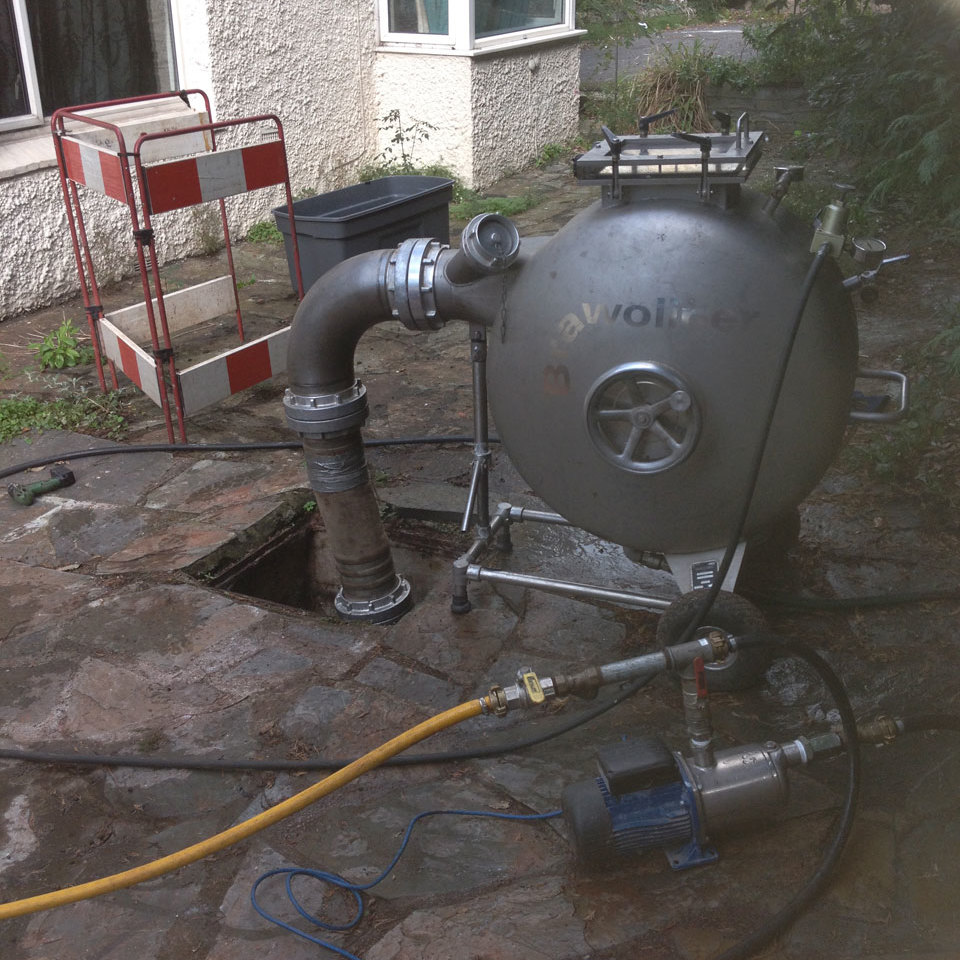
The Brawoliner inversion drum again showing an alternative outlet arrangement and the recirculation pump.
The barrier was moved briefly just for the photo.

James wetting out some Brawoliner.
Note the vacuum pump hose attached to the end of the liner on top of the plastic box.

The WC pan has been removed and the drain lined from the manhole outside.
The liner has emerged from the drain and is contained within a piece of pvc hose.
The next stage will be to trim the liner flush with the floor and then refit the WC pan.

The lining trailer about to be unloaded.
|
|
Polyester Resin/Felt Liner |
Brawoliner |
|---|---|---|
|
Material Cost |
Low |
1.5 to 2 times that of Polyester |
|
Equipment cost |
Can be very low as in a garden roller and a water tower made from a plastic drain pipe low. |
Very high as it needs a compressor, a vacuum pump, a boiler, a recirculation pump and an inversion drum. Our basic rig cost well over £10,000 and that was 12 years ago. Since then we have added many refinements. On the plus side the equipment is very well made and long lived. |
|
Speed of installation |
Fast. Possible to line 3 lengths in a day |
Lengthy. Realistically, we can only line one length in a day - even a short one. On the plus side we can still line a very long length within that day. |
|
Lengths possible |
Quite short. 25m would be considered challenging. |
Long. We have lined 50m lengths on 3 occasions. The only reason that we have not lined longer lengths is that we haven’t come across any. |
|
Bends? |
Standard liner is not suitable for bends |
Brawoliner will line multiple bends with no problem. Thats what it was originally designed to do. We can even line around the ‘swan neck’ of a gully. |
|
Roots? |
As the liner is only an interference fit in the drain, roots can grow back along the tiny gap (annulus) between the liner and the drain. |
The epoxy resin used with Brawoliner bonds to the existing pipe so roots cannot grow back. |
|
Guarantee? |
Ask...... |
Brawoliner uses a special epoxy resin formulated just for them by MC Chemicals who give a 15 year guarantee on their materials. The resin is distinctive green in colour and the liner has ‘Brawoliner’ written along its entire length; so it is identifiable for life. |
|
Smell? |
There is a strong smell of Styrene. Not suitable for inside buildings |
No smell. Suitable for inside buildings |
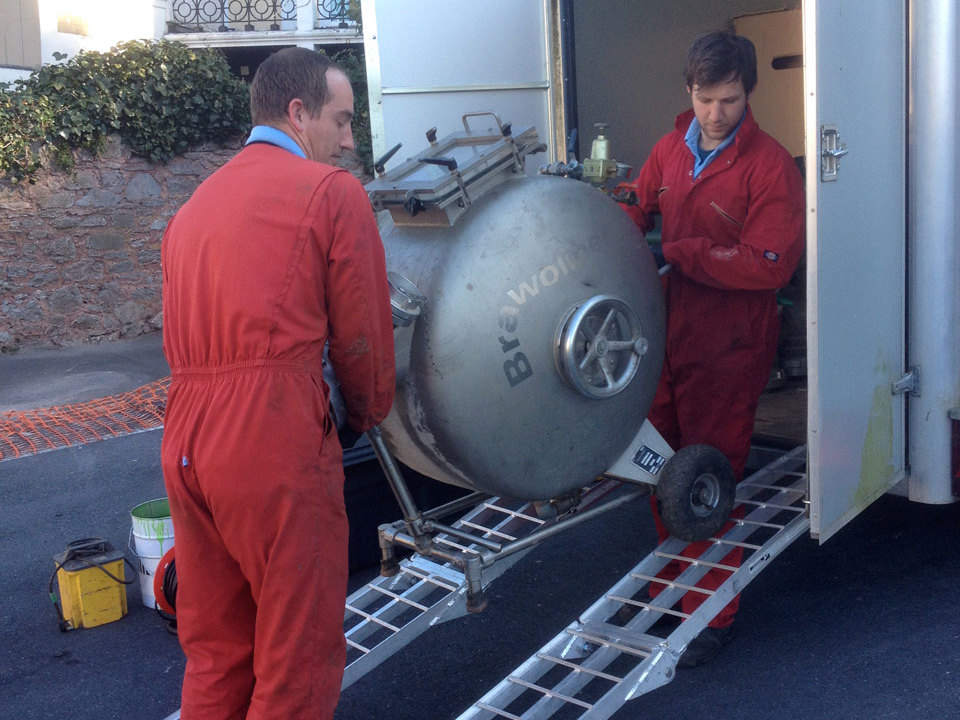
Steady!
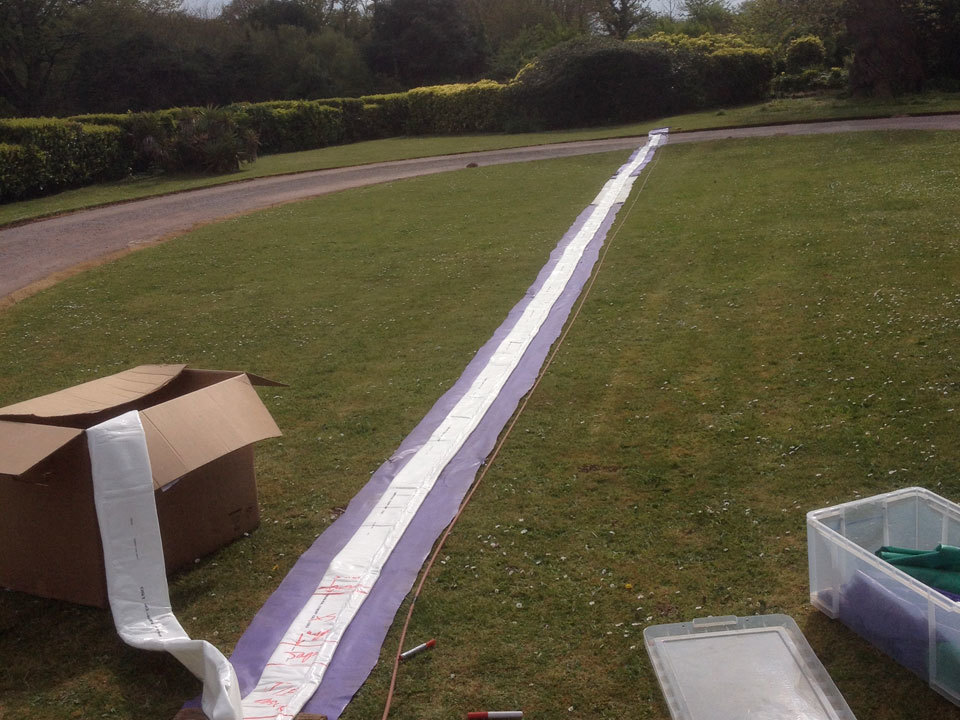
About 28m of 6 inch liner being measured out at Stoke Gabriel. Just think what 50m looks like!
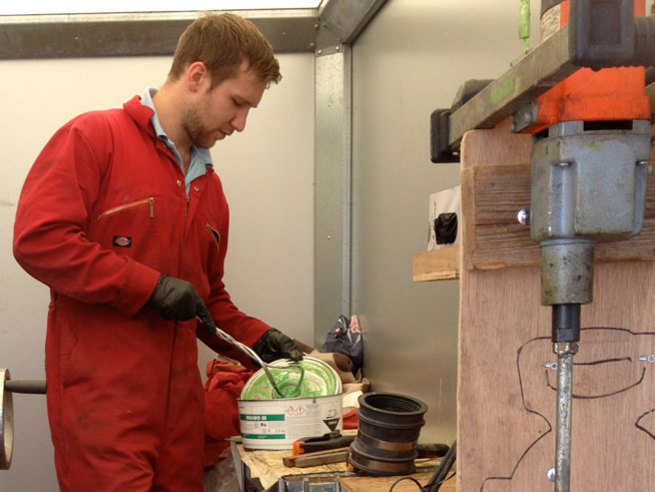
James in the drain lining trailer. He is spreading mixed resin on an empty resin tin so that it can be disposed of safely.
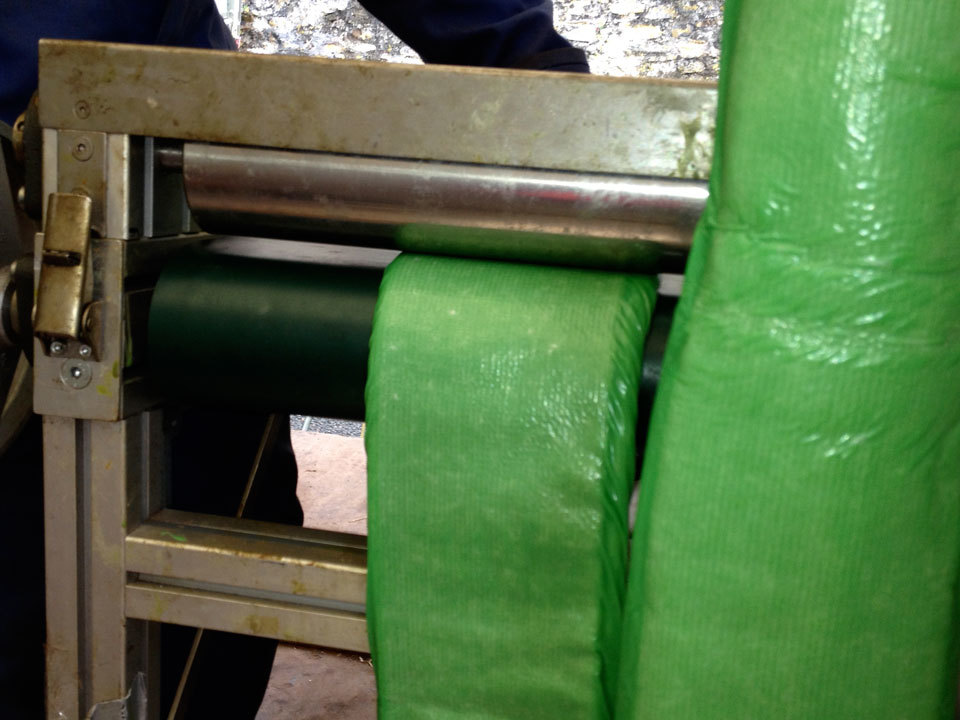
Brawoliner being put through the rollers to ensure even distribution of resin and the correct thickness.
